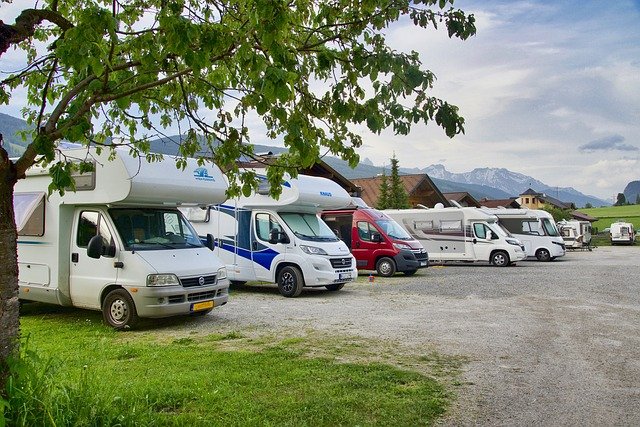Used RV Guide: Start Your Affordable Mobility Lifestyle
A used RV can open the door to flexible travel without the premium price of a new rig. This guide explains why pre-owned models are worth a look, the major RV types, how to hunt for value in your area, what to inspect before buying, and how real-world prices compare across well-known providers.

Starting an RV lifestyle does not require a brand-new rig. Many shoppers find that well-maintained used RVs deliver similar comfort and capability at a more manageable price, especially if you prioritize layout and condition over model year. With a bit of research, inspection, and patience, you can identify a reliable vehicle that suits your travel style and budget.
Why choose a used RV?
Buying used lets you skip the steepest part of depreciation, often saving thousands while still getting modern features like slide-outs, solar prep, and efficient appliances. Insurance and registration can be lower for older models, and you’ll have a broader selection of floor plans on the market at any time. The trade-off is variability: maintenance history and storage conditions matter. A careful inspection and service records can reveal whether a rig has been gently used or needs significant attention.
What types of used RVs are there?
Used RVs fall into motorized and towable categories. Motorized units include Class A (bus-style, spacious, often with large storage), Class C (cab-over bed, family-friendly), and Class B campervans (compact and easy to park). Towables include travel trailers (lightweight to spacious), fifth-wheels (stable towing and roomy interiors), toy haulers (garage space), and truck campers (versatile for off-grid trips). Consider where you’ll camp, how many people will sleep aboard, and whether you prefer driving a single vehicle or towing with a truck you already own.
Looking for affordable used RVs
To find value, combine national marketplaces with local services in your area. Reputable dealers maintain inventories, handle titling, and may offer limited warranties or inspections. Online platforms expand your options and make it easier to compare features and conditions. Independent mobile RV inspectors can evaluate a rig at a seller’s site, offering objective insight before you commit. Seasonal timing matters: listings often rise after peak travel months, and prices can be more negotiable during slower periods or when new model years arrive.
Key factors to consider before purchasing
Start with signs of water intrusion: check roof seams, corners, slide-outs, and around windows for staining or soft spots. Verify tire age via the DOT date code and assess brakes, suspension, and frame rust. For motorized units, review engine and transmission service intervals and scan for diagnostic codes. Test every system—12V/120V electrical, shore power, batteries, converter, propane, furnace, A/C, water pump, water heater, and all appliances. Extend and retract slide-outs, inspect seals, and confirm awning operation. Confirm title status, VIN, weight ratings, and that your tow vehicle can handle the load.
Make a purchase decision
Plan a realistic total cost of ownership rather than focusing solely on the listing price. Budget for insurance, registration, sales tax, potential storage, routine maintenance, consumables (tires, batteries), and campground fees. Fuel costs vary widely by class and driving style. A pre-purchase inspection reduces surprise repairs and can support negotiation. Test drive to assess handling, braking, interior noise, and comfort. If financing, confirm lender requirements for older units and inspections; some lenders limit terms based on age or mileage.
Real-world used RV prices and providers
Expect wide price bands determined by age, condition, mileage, brand, and season. Dealers can add reconditioning and documentation fees, while private sellers may price aggressively but offer fewer protections. The examples below reflect common listings from well-known providers and platforms and are intended as broad estimates.
| Product/Service | Provider | Cost Estimation |
|---|---|---|
| Travel trailer (2016–2020, 20–26 ft) | General RV Center | $13,000–$25,000 |
| Fifth-wheel (2015–2019, mid-profile) | Camping World | $25,000–$45,000 |
| Class C gas (2014–2018, 24–30 ft) | Lazydays RV | $35,000–$70,000 |
| Class A gas (2013–2017, 30–36 ft) | RV Trader listings | $55,000–$95,000 |
| Class B campervan (2016–2019) | PPL Motor Homes | $60,000–$95,000 |
| Airstream travel trailer (2013–2018, 19–25 ft) | Authorized Airstream dealers | $35,000–$70,000 |
Prices, rates, or cost estimates mentioned in this article are based on the latest available information but may change over time. Independent research is advised before making financial decisions.
In summary, choosing a used RV is about aligning needs, condition, and budget. Decide on a class and layout that fit your travel plans, verify the rig with a thorough inspection, and compare listings across reputable dealers and platforms. With clear expectations and a careful eye, an affordable, reliable home on wheels is attainable without compromising comfort or safety.




